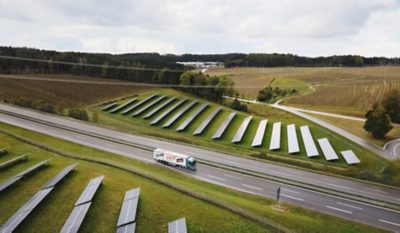From Production to Recycling: The Journey of EV Batteries


A battery’s first life – Optimizing performance and longevity
Volvo electric vehicles are equipped with highly efficient and responsibly sourced Lithium-ion (Li-ion) batteries. We continually work with our suppliers to ensure our requirements on social and environmental sustainability are met. These requirements guarantee that human rights are respected and that our environment is protected.
The batteries used in Volvo Group applications are designed with two key aspects in mind: providing excellent performance for many years, while retaining good health for their second life.
During a battery’s first life, our intelligent battery management system protects the battery from excessive degradation. Our systems ensure an optimal state of charge, prevent extreme temperatures, and optimize charging cycles. We continuously collect data and make analyses to further improve the battery’s performance throughout its life. As an owner of a commercial vehicle from Volvo, you never have to worry about the battery in your electric vehicle.
After serving you for many years, the battery reaches a point where it no longer has the capacity to meet your needs. When frequently used, this commonly happens after around seven or eight years. The battery still has 70-80% of its total capacity left – which is more than sufficient for other uses. That is why it is critical that the battery is collected and taken care of.
As we are in the beginning of the shift towards electric, the current number of second-life batteries on the market is relatively low. Knowing that the number will increase by a great amount over the next years, second-life battery initiatives are an investment in the future. By accounting for the complete battery lifecycle already in the design process, Volvo Energy is laying the foundation of a future where post-vehicle batteries can be reused and repurposed as efficiently as possible.

Used batteries are valuable assets. Through analyses of battery data, Volvo Group can find the most viable second-life application for every unique battery – further extending its total life before being recycled. This process is optimized through digitalization. The Volvo Group is currently developing a “Decision Engine”: a system that combines battery data with AI to define when a battery needs to be replaced, monitor the supply and demand of second-life batteries, and decide the best option for every unique battery unit. The Decision Engine will even monitor the logistics flow to reduce the environmental impact of transporting batteries.
There are various options for how to best prepare a battery for its second life depending on its condition. A battery that has been taken care of during its first life can sometimes be remanufactured. By replacing the battery’s modules, the unit becomes as good as new and can be mounted back into a vehicle.
When remanufacturing is not an option, repurposing is another solution to extend the battery’s total lifecycle. The transition towards mainly renewable energy sources, such as solar and wind, requires energy storage solutions. Second-life EV batteries happen to be the perfect fit.
Used batteries can be a building block in a Battery Energy Storage System (BESS). BESS is an assembly of many battery packs, essentially creating one high-capacity energy storage system. Battery Energy Storage Systems can power buildings, be used for off-grid applications, or store energy from renewable sources. Volvo Energy has invested in battery energy storage specialists Connected Energy as a part of securing the acceleration of the Group’s battery business.
When a battery has been fully used, it is discharged and dismantled before materials are recovered through the recycling process. The recycled material can then be re-inserted into the primary material to produce new batteries, reducing the amount of extracted material needed.
At the Volvo Group, we are determined to ensure that all batteries powering our applications are used to their full potential, for as long as possible. Batteries enable the transition to renewable energy sources. With sustainable end-of-life processes in place, second-life batteries can accelerate the shift towards zero emissions and ensure that we meet our commitment to the Paris Agreement by having a fossil free fleet by 2040.